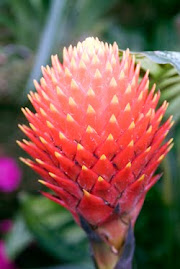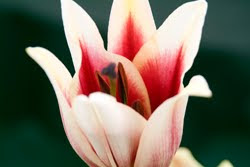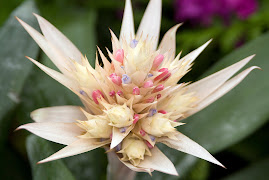There is something very mystical about watching forty or so Asian elephants moving almost majestically in procession, trunks and tails swaying, towards a river where they will take a communal bath. It is a sight I had waited a long time for and this alone would have been worth venturing several thousand miles to witness even had the tropical island had nothing else to recommend it. The elephants, as it transpired, were the icing on the cake because I fell in love with the beauty and the people of this wonderful island that sits, like a glistening pearl, in the Indian Ocean just at the foot of the Tamil region of the Sub Continent.
At the time the island was at war, but then it has been at war for much of its history only this time the fighting was not against an invading force but between the Tamil people and the Government. That makes things all that harder to accept given the otherwise inner tranquillity of the people. Now there is a kind of uneasy peace. Discussions between the warring factions are under way but how long this will last is anybody’s guess. Mostly the fighting has been restricted to the Jaffna region in the north of the island but every so often a bomb will explode elsewhere, on a crowded train or on a Colombo street killing unsuspecting citizens and reminding tourists that the regime is still unstable.
Countless lives have been lost fighting to gain independence for a tiny strip of land. They haven’t all been human lives either. Many casualties have been from the wild animal population. The elephants have frequently been casualties and their existence remains on a tightrope in Sri Lanka as in other parts of South East Asia. Sometimes an elephant has been caught in cross-fire, on other occasions a single animal may have torn up a farmer’s crops causing him to hunt the animal down to kill it. Worse, some have trodden on mines and have lost a foot or an entire limb but have continued to live, usually in extreme agony until secondary disease from the wound spreads and eventually causes an awful prolonged death. The ultimate only comes after the elephant loses its’ mind with the pain that can turn it into a very dangerous and unpredictable animal in the process.
It is believed that 12,000 elephants once roamed wild on Sri Lanka. This was around 1900 when the natural resources that the animals would feed on were plentiful and the population smaller. Now almost 20 million people inhabit the island and much of the habitat where elephants lived and thrived peaceably within their environment has gone cutting their numbers to just a few thousand wild animals. Those elephants that get maimed frequently become separated from their herd. Many of the victims have been females with young that have not yet been fully weaned. The baby elephants, left to their own devices, fall over cliffs or simply starve to death. The few lucky ones are captured by caring villagers and are taken to the Orphanage where they will be fed and cared for.
In 1975 the Sri Lankan Department of Wildlife set up the Elephant Orphanage to care for the offspring of dead or injured mothers that had been found in the jungles. Twenty five acres of coconut grove were taken up at Rambukkana on the Maha River. The orphanage moved locations on several occasions, at one time being housed at the tourist area of Bentota before moving to the Dehiwala Zoo. It eventually ended up at Pinnawela and had just five baby elephants in its care. The intention was for visitors to be attracted to the orphanage and the money raised from entrance fees etc. would support the cause. In 1978 the National Zoological Gardens took over the running of the centre and a captive breeding programme was launched in 1982. At that time there were five mahouts caring for twelve elephants. By 1997 the adult elephant population had increased to 42 and there were 10 babies, all under three years old. Although adult female elephants could successfully be introduced into the orphanage, the situation tended to be the opposite with the males because of their naturally aggressive behaviour.
The Orphanage tries to maintain a natural wild environment for its charges. The babies are fed by hand on milk before being allowed to roam freely over 12 acres of grassland. There are signs of what elephants tend to do naturally, break down trees and the compound is littered with torn off branches. Twice a day the animals are walked to the Maha Oya River, just 400 metres away where they enjoy a two hour bath. This is the spectacle that the majority of visitors come to see and this can be done from the terrace of a restaurant that overlooks the bathing area. The frolicking is great fun to watch even though the occasional elephant may attempt to wander off across the river. The mahouts soon spot a troublesome one and ensure that it is kept with the others.
During the evening the babies are again fed on milk while the older animals receive leaves. The usual diet consists of jackfruit, coconut, tamarind and grass. Each elephant is fed 76kg of green food a day which is supplemented with 2kg of mixed maize, rice, bran, powdered gingelly seed and minerals. Although penned for the night, boredom can set in quite easily so some of the older elephants are encouraged to work by using their trunks to carry tree branches and food stuffs.
Sama is an adult female elephant, now aged about twelve, who had her right forefoot blown away by a landmine when she was only two years old. She had learnt to walk on three legs although as she grows the imbalance is putting stress on her spine. Reports from the Orphanage state that one of the zoological specialists is hoping to train the Sama this year to wear a prosthesis that they hope will solve the elephant’s imbalanced stance. Only time will tell whether the experiment is a success or not.
The good work of the orphanage specialists and staff, aided by others from around the world, continues to save the lives of many of these unfortunate creatures. The Orphanage attracts more than 600,000 visitors a year which helps to create a continued awareness of the problems faced by the Asian elephant that can only help the species’ fight for survival. If you get the opportunity to visit this picturesque island be sure to take the road from the capital Colombo towards the ancient city of Kandy. Set in the hills approximately half way between the two cities you will reach Pinnawela village. It is easy to miss but the yellow signs at the roadside showing an elephant crossing will provide a clue. You will be richly rewarded by the experience of walking amongst these delightful animals.
Friday 23 November 2007
Subscribe to:
Post Comments (Atom)








No comments:
Post a Comment